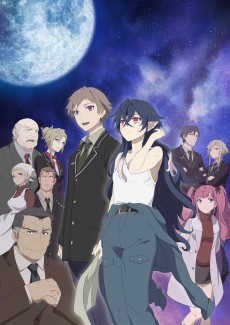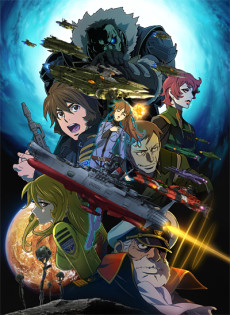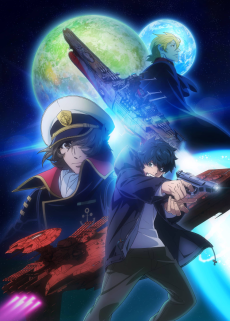SEIKAI NO MONSHOU
STATUS
COMPLETE
EPISODES
13
RELEASE
March 27, 1999
LENGTH
24 min
DESCRIPTION
Based on a science fiction novel series, Crest of the Stars (Seikai no Monsho) is the first installment in this sci-fi saga. The story follows Jinto, whose world was taken over by the largest empire in the galaxy: the Abh. Jinto's father, the planet's prime minister, handed their world over to the Abh in exchange for a standing in the Abh Empire. As a result, Jinto became a prince and was shipped off for an Abh Education. There he meets a princess of the Abh Empire, Lafiel, whom he quickly befriends despite her cold exterior. The Abh Empire is plunged into war soon after and the story continues from there...
(Source: Anime News Network)
Note: The last episode aired with a runtime of ~40 minutes as opposed to the standard 24 minute long episode.
CAST
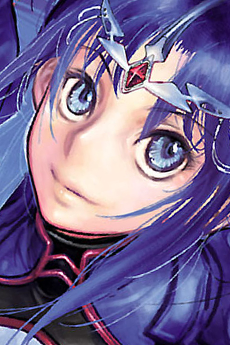
Lafiel Abriel
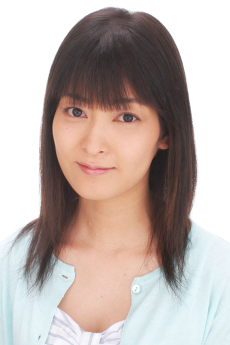
Ayako Kawasumi
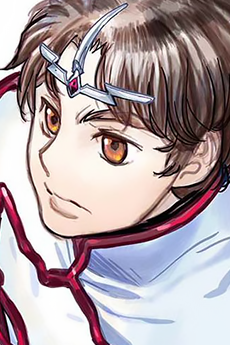
Jinto Linn

Yuka Imai
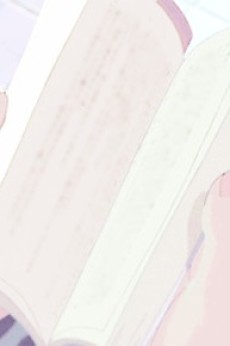
Narrator
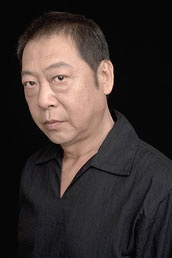
Haruhiko Jo
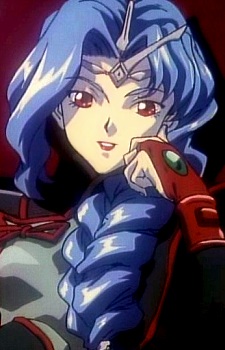
Beneej Spoor
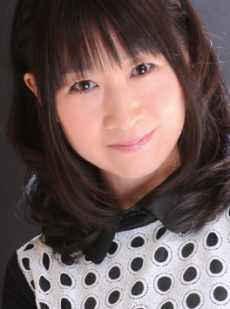
Rica Fukami
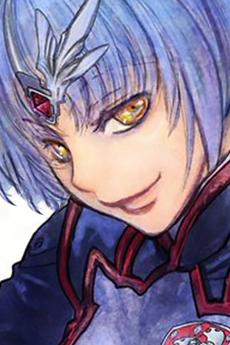
Plakia Lexshue
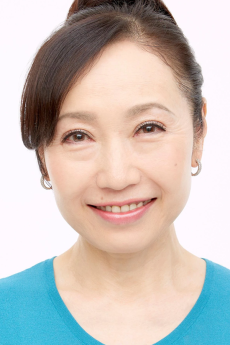
Gara Takashima
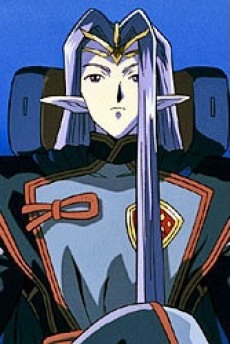
Dusanyu Abriel
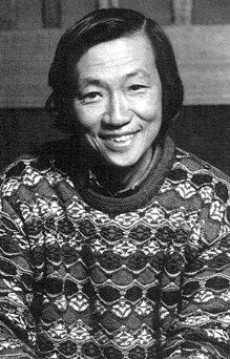
Kaneto Shiozawa

Dorin Ku

Taiki Matsuno
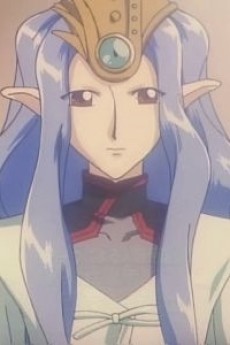
Abriel Ramaj
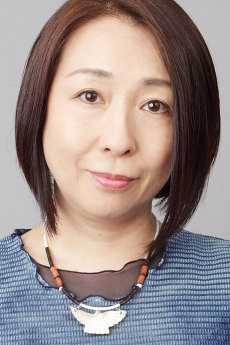
Mika Doi
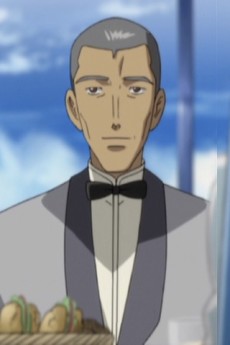
Till Clint

Eiichirou Suzuki
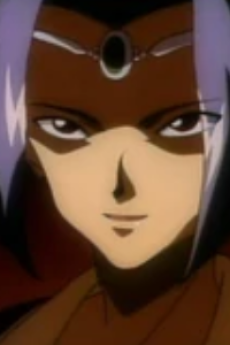
Febdash Danshaku
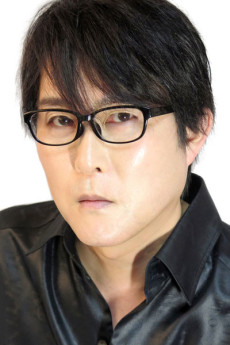
Takehito Koyasu
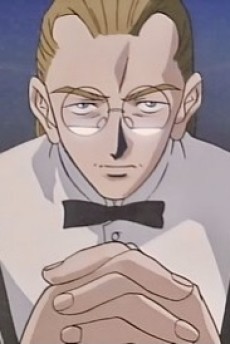
Rock Linn

Hideyuki Tanaka
EPISODES
Dubbed
RELATED TO SEIKAI NO MONSHOU
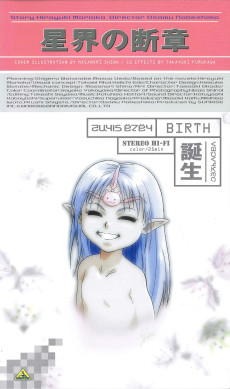 SPECIAL RomanceSeikai no Danshou: Tanjou
SPECIAL RomanceSeikai no Danshou: Tanjou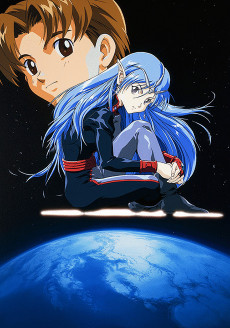 ANIME ActionSeikai no Senki
ANIME ActionSeikai no Senki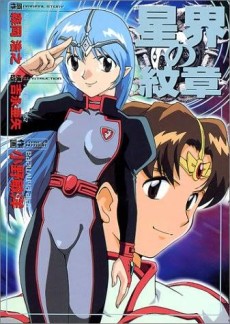 MANGA Sci-FiSeikai no Monshou
MANGA Sci-FiSeikai no Monshou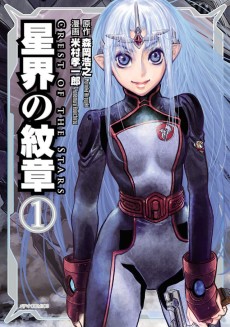 MANGA ActionSeikai no Monshou
MANGA ActionSeikai no MonshouREVIEWS

PlatinuMan
55/100An ambitious work that sadly cannot deliver what it sets out to beContinue on AniListCrest of the Stars is a tale of futuristic fighting between two factions: the "alien" race of the Abh and mankind. The Abh aren't necessarily alien as they are enhanced humans - they have altered genes that give them prominent features such as longer youth and blue hair. They were originally intended to be "living machines" to mankind but soon found independence on a space voyage for new planets to inhabit. They follow a imperial system, with influential families having elaborate names and taking top positions in the economy or military. Humans are split into 4 differ factions that ultimately make the United Mankind. A majority of the ones shown in the anime carry a grudge against the Abh. This is due to the fact that the Abh have gone from rebels seeking independence to galaxy conquerors. The Abh have military and economic dominion over the United Mankind. Now, in an ironic move, mankind seeks freedom and independence from those that wanted their independence. Despite this seeming like a good start for a story, the anime does not focus on the huge war taking place. The effects and some small fighting moments are shown, but they are not the main story. Instead, it takes a more personal look at two characters caught up in this war: Jinto and Lafiel.
Jinto is a young boy who is the son of the Hyde star system's president. His father, Rock Lin, made a shady deal as their world was taken over by the Abh: rather than fight the invaders, he opted to become the territorial lord. This by effect made Jinto Abh nobility. Seven years after this event, he is on his way to a military college in the Abh's capital where he meets Lafiel. Lafiel also carries social influence - born in the Abriel family, she is a princess and the granddaughter of the Abh's empress. She currently works as a flying trainee trying to work her way up in the military. The anime follows the two trying to reach their destination only to be sidetracked by the war taking place - their tale turns from one of an escort mission to that of survival.
Their personalities, as you would expect, are quite different from another. Jinto is more relaxed and calm, while Lafiel is serious and straightforward. The two protagonists form an interesting dynamic with each other. Due to her military experience, Lafiel is sharp when it comes to controlling ships or coming up with a strategic plan. Jinto is more aware of social cues and is able to help them keep a low profile in enemy territory or ease a tense situation. With personality traits like these, they have good chemistry with each other (that also hints at a bit of romance). The moments where they are alone and discuss what to do next are some of the better moments in the series. The talk may be a bit more formal, but their conversations always have a friendly delivery with each other that feels natural for them. Had this show been a character study in a more low-key setting, it would make for a great series.
Unfortunately, this is not the case. Crest of the Stars still seeks to be a space opera full of grand bombast and wonder despite focusing mainly on two characters. Mixed between the relationship of Jinto and Lafiel are battle scenes and side characters that ultimately fall flat. This is due to not enough time being put on these elements. A show can't achieve a full complex environment in only 13 episodes and still spend a majority of its time on its two leads - some elements will have to be cut. This results in many of the dire circumstances feeling like "misadventures", such as when they are "held captive" by the Baron Klowal. Rather than fear for our heroes, I was ultimately watching as to when they will escape because of the lack of tension. The battles that Laimsairh and Spoor, two of the Abh ship leaders in the war, are involved in have no weight because we hardly know the opponent they're fighting. Additionally, because they interact so sparingly with the main two, it feels like episode fluff rather than seeing a smart or flashy military battle. Crest of the Stars wants to be a space opera but in reality is a romanticized adventure.
Character wise, Lafiel is fine due to her straight shooter attitude, but Jinto can be a bit questionable at times. I at first (and still mostly do) found him to be a breath of fresh air in terms of a lead. He's not the manliest guy, but he doesn't overreact or make a big deal of the scene around him, making him more human than cartoon. This goes a bit too far in situations where there IS something to worry about - in other words, he underreacts. In scenes where death should be lurking around his corner, he is strangely calm and makes lighthearted remarks. I can give him the benefit of the doubt and say he's near fearless, but his relaxed attitude makes it so any scene wanting to be intense feels deflated. The other characters are eclipsed by these two, so characters that could be interesting like the ones in Marca's group or Laimsairh are sadly sidelined.
In more general terms, the Abhs and mankind are also characters that can be faulted, but this is more of the way the show presents them instead of who they actually are. Some stories have very simple sides to choose (heroes vs. villains) while other stories like to show each side has mixed morals and ultimately either side is right in their means. Crest of the Stars wants to do both, trying to throw cries of independence and goodwill at both sides while making the humans have a more negative appearance (lying, violent propaganda) while the Abhs have a more positive appearance (graceful appearance, gentle yet firm speech). If this were a political piece, surely the audience would lambast this as strawmanning. Even the narrator's opening shifts sides, starting with an overview of the world before telling twisted tales of the Good Samaritan to bolster the Abhs. Though there's an argument for this show being imperial propaganda, I don't think it's as much imperial propaganda as much as it is bad directing/storytelling. It's much easier to write simple sides than to give each side its own reason for being good. Even shows like LoGH fall victim to this, albeit they do it in much less of a "kneejerk" way. Again, a lesser scope or more episodes can avoid this. Sadly, this is the end result.
These last two issues are not as dire as the first (to me, it's worse to be not invested in a show than anything else), but are still some faults of the show. Of course, all of these faults could ultimately be due to the adaptation. The novels the anime was based on won a Seiun Award, an honor given to the best Japanese science fiction works of the year. The novels may carry more detail than what the anime can show, so perhaps it needed 2 cours to fully show off its potential.
Visually, the animation is fine. It can come off as a bit on the budget side at times, but it looks decent in motion (especially in the faster paced-scenes). Adding to this is the good use of multi-tone shading, an older tradition that looks as great now as it did then. The character models can look a bit strange at times, with an odd curve in their skull (this is most apparent in Seelnay's appearance) but it stays consistent and there's really no off-models with the look. The soundtrack is very good, with big string sections and pleasant tracks giving the right mood to each scene. The ED, "Ushinawareta Aozora", is a catchy, nostalgic sounding sing-along and works great alongside the pictures of the two protagonists growing up. The voice acting is fine for what the show gives us - it's a formal setting, so formal voices are to be expected. A bit more passion from Jinto would and a slightly less annoying voice for Seelnay would be preferred, but they all do a good job playing their roles.
Overall, I give Crest of the Stars a 5.5 out of 10. The truth is that Crest of the Stars cannot do anything Legend of the Galactic Heroes does better in the space opera genre. A show like LoGH covers a wider and more detailed look at politics, tactics and human behavior than Crest of the Stars does, even within its first 13 episodes. A made-up language and fancy names can only distract a viewer so long. Crest of the Stars might be liked if you want something more romantic, but otherwise I would avoid unless you are an avid fan of the genre tags.
Do you like or dislike this anime? If you haven't watched it, are you encouraged to watch it or not? Leave a comment on my profile telling me what you think of the anime and/or my review.
Thanks for reading and have a blessed day!

Rastrelly
95/100A master-class in character and world buildingContinue on AniListCrest of the Stars (CotS) (and its followup, Banner of the Stars (BotS)) is the series I return to to make myself feel something again at the least once per year. This is an adaptation of sci-fi novels by Hiroyuki Morioka, which I, too, hold very dear to my heart. The books and the series are very similar in many aspects, and actually complement each other very well. there are some things done in the adaptation, that actually surpass the source material, while in some cases the books beat the anime, and this I consider to be extremely rare, as usually the book surpasses its adaptation in every aspect. I will not focus on the books too much, but several differences I will point out.
Storyline
The story of CotS takes place in a universe of roughly 4000AD. Humanity has spread across the galaxy in chaotic fashion during a heated diaspora age, when Earth got too overpopulated, and humanity developed the tech to safely travel between the stars, and to effectively terraform certain planets.
Early ships used nuclear propulsion to reach interstellar speeds, until later the yuannon particles were discovered, allowing to get some yo sick propulsion with free power supply, dude ... ahem, sorry. Anyway, yuannon propelled ships were travelling faster, further, were bigger and more effective, and thus overshadowed and pushed aside the classic nuke-powered ships.
What humans did not know is that yuannons were a bit more than just particles - they were gates to local hyperspace, that is... planar. Each yuannon is connected to a fixed point in 2d-space, which means that hyperspace and realspace are not connected in any comprehensive way. Two portals - called sords - can be in one system in 3d space, but separated by months of passage in hyperspace, - or can be nearby in 2d space, but lie on two opposite sides of the galaxy in 3d. Add in that passage through the sord is not as simple, too. Hyperspace is literally flat, ergo, 3d object cannot just get in. So, the ships have to hide inside a "space-time bubble", an area of pseudo-3d space, in which the laws of normalspace still work. There are many more rules on which the planar space works, but I've kinda digressed. This stuff is important, though.
So, there is the evil empire of the race called Abh. Brutal conquerors, they attack and enslave every world inhabited by humans they find, and force it upon the unholy rule - or this is what you'd hear as a citizen of four other interstellar states in the galaxy. Abh do indeed conquest all they can, though - in particular, the free worlds, inhabitants of which do not belong to the states with hypercapable ships.
One of the two CotS protagonists, Jinto Linn, lives on one of the worlds like this - Martine, a planet in Hyde system, was discovered and conquested by the Empire roughly 300 years after its colonisation by the "Leif Erikson" yuannon-powered ship. He is the only son of Rock Linn, who happened to be the president of this colony at the time of invasion. Unlike many martinians, president Linn understood quickly that a fleet of a couple of thousands ships orbiting your planet is not something you can beat with six barely working laser turrets, built mostly to prevent asteroids falling down. So, the president makes the decision to not try anything funny, and surrenders the planet, under condition that the ruler of the planet (which, by imperial law, is a feudal nobleman) will be elected from its populace.
Imperial commander, crown prince Dusanyu, who is a troll of galactic proportions, agrees -- and assigns Rock as the new planetary ruler. From president of Hyde system Rock Linn becomes the Count of Hyde, and the planet Martine - now Martinyu - becomes a part of his "own territory". Jinto, who, I remind you, is the protagonist, was 10 at the time, and for his safety he was transmitted to neighbouring Vorash Countdom, where, on the planet Delktau, he finishes his schooling. But to become an actual nobleman with the right of inheritance he has to partake in at least ten years long military service in the Imperial Star Forces, and thus has to enlist into the military academy.
The structure of Star Forces is another very interesting topic, which is connected to the way the race of Abh functions. The Abh are humans, who were genetically engineered to thrive in space. They can withstand low gravity without muscular and skeletal degradation, they can survive extended periods of several-g acceleration without internal organs turning into soup, they are able to calculate complex trajectories intuitively, and they have a special organ, allowing them to visualize space around them, called frosh (though, to use it at full potential they need special devices). All Abh technology is built around these abilities - for example, they control starships by projecting ship sensory data through frosh, making pilots to feel as if they were the ships. Genetic Abh have naturally blue-ish hair as a marker of their heritage, and each genetic Abh of noble rank from baron and up has to genetically modify their children in order to comply with Imperial Genetic Standard, which remains unchanged since the origin of the Empire (I know, I know, too much "genetic"). Without it the Empire would not be able to function for obvious reasons. Abh themselves (as well as Imperial law) consider an Abh anyone who belongs to any kind of Imperial nobility - from a squire, to the Emperor himself (it's relatively easy to become Abh - squirehood is automatically provided to acting officers or medium-level officials). For regular humans in most of the galaxy, though, the Abh usually are considered to be a separate race, or worse, as rebellious subhumans, and this is the root of tension.
Look, I haven't even started discussing the plot. You see how deep this setting goes? This is one of the best parts of CotS - the depth of and integration between the setting and the narrative. The setting dictates how the story will progress, as it should in a good sci-fi.
Now, as a nobleman's son, Jinto has the right to be delivered to the academy via a ship of the Star Forces. He uses this right, and a patrol cruiser "Gosroth", which passes by the system of Vorash during its test run, picks Jinto up on the way to the Imperial Capital of Lakfakalle.
The shuttle dispatched to pick Jinto up is piloted by a cadet - "a trainee pilot" - called Lafiel. She is just a regular blue-haired pointy-eared Abh girl. Jinto, as oblivious as he is, asks her for her name - for which she replies with oddly phrased "You can call me Lafiel!"; Jinto was an outsider, and he did not know that pointy ears are another genetic marker -- of belonging to the Abriel family, i.e., the family of the Emperor, and that this girl is granddaughter of Her Majesty Empress Ramaj, and the daughter to Debeus, King of the Royal House Kryb. Fed up with inability to come closer with someone - anyone - due to her high place in the Imperial social hierarchy, she gets the first true friend in Jinto thanks to his ignorance, and this kickstarts their long friendship.
The two successfully return to "Gosroth" and... The war starts right there, with an invading fleet of Four Nations Alliance moving in to seize control of key worlds in the area. Further development of the plot I'll avoid to spoil - this is totally worth watching. There are no "unnecessary" parts in this narrative. Some reviewers point out that part of the story in the middle (the one involving certain barony) is unnecessary - I disagree. It is very important in order to understand both the characters and the setting. You see, in CotS and its followups, the story is built around the setting, and said barony is the flawed microcosm of said setting. If you understand what and why happened in the barony - you understand the Empire and the Abh as a whole.
Characters
This is probably one of the - or the main dish in the platter. The cast is rather wide and varied, and while most characters lack screentime for obvious reasons, even the background roles are rather memorable and well-characterised despite lack of time. Each character has clear motivations, character quirks, and some even get proper character arcs - often absolutely unexpected.
But the main main dish is clearly the protagonist duo. Thanks to them, CotS is often compared to Wold and Spice - not too accurate, but understandable comparison. Relations between Horo and Lawrence are absolutely different than those between Jinto and Lafiel, yet the feeling is similar. The two interact a lot, trying to find common ground with their diametrically different perspectives. Lafiel is literally peak Abh - she comes from the Imperial Family, and these guys do not mess around; they are expected to be, and raised as the best of the best - confident, skilled, smart, proud and often arrogant, Lafiel is the literal powerhouse of the duo. She's the one to kick ass and chew bubblegum here. But she has flaws, many not quite obvious, that could be her downfall (as Jinto has pointed out - "You are like a hardened blade; if one would bend you too hard, you'd break but not give up" (or something like that)) - if not for Jinto, who, too, is far from being a fool or useless. Unlike Lafiel he is neither powerful, not confident. He feels lost and lonely in the "alien" society, and he does not feel whether he deserves the title or can he carry the responsibility associated with it. He needs Lafiel, becuase in the world of Abh he is lost and helpless - but, oddly, Lafiel needs him even more. Their dynamic is written brilliantly, and the way their friendship builds up is shown the way I've never seen done that good neither before, nor since.
BAAAAD
There are flaws, though, some - big, some - small. My main, and the largest gripe with this anime is Jinto's seiyuu. Yuka Imai just does not fit the role. Jinto sounds like he's either dying, or ready to wet everything around with tears half the time, and his narrations are pure cringe and hard to listen. I know some people like this approach - I don't. Jinto is not someone to constantly stream his self-pitying. He does pity himself sometimes, but almost never allows others to see it. He builds a sarcastic facade, behind which he hides his fears and insecurities, and even in the most dangerous situations he will mostly stream self-deprecating jokes or #sarcasm at any threat he'd face.
On the technical side - animations sways from AWESOMEGLORIOUS to pure shite depending on scene, time of day and temperature on Martian poles. Characters can go off-model so hard you'd think they're different people. Surprisingly, the most off-modelling one is Lafiel, whose face drawing swings from absolutely hypertrophied chibi-esque weirdness to Evangelion-style. Some scenes show certain QUALITY, which is acceptable for short frames, but the stuff sometimes stays on screen for far too long. At times animation is not present at all - this all is clearly budgetary restraints showing, but the stuff is there. In the ending five minutes of teh last episode the authors even have to use recuts of scenes from before to fill the parts of final dialogue.
Score is very good, but it is often mismatching to the scenes it supports - or going into total mood overkill, when something slightly sad thanks to the music turns into, again, cringe-inducing tearjerking attempt. But when it works - it works.
Finally, the first four episodes of CotS are chronologically jumpy - to the point of becoming complete mess. Story jumps between Jinto's arrival to Delktau space port, annexation of Martine and Jinto's departure from Martine, with added flashbacks about Jinto's life on Delktau. I am usually not against the technique, but in this case, especially in first viewing, it is hard to follow, and does not improve the pace in any real way. Plus it's the most Jinto-narrated part. D'oh.
I'll throw in some minor nitpicks on the series overall, too, for the sake of completeness:
1) In BotS we see female Abh wearing dresses. While I would be the last man to say that I'm not happy to see Lafiel in a cocktail dress - this is a serious mistake: both male and female Abh when wearing civilian clothes in-canon would wear skin-tight garment called sorf and a decorated robe on top of it. In CotS this is pointed out quite well. I understand the desire to show off dem legs - and support it in full - but a nice sorf can help with this task equally well.
2) In the book Lafiel is described as having dark-blue hair and piercing black eyes (or, at least, in a translation I was able to put my hands on - a Russian bootleg one :D). I think this look would actually suit her better. What's funny, in the anime someone mentions that Lafiel has black eyes, while her character design clearly does not.
3) In the book there is a rather large and very important scene of the Imperial Elders Council meeting near the end of the story. It had to be in the anime, as it is extremely important. Not only it is funny as hell, it'd clear up a bunch of misconceptions about the Abh, the Empire and the overall plot.
4) Through almost the whole CotS Jinto is wearing Imperial Star Forces junior officer-administrator's uniform instead of a civilian sorf, while constantly insisting he does not wear a military uniform.
There are a couple of other issues I have - even more nitpicky, and spoilery, so those I'll omit presenting.
Overall
It's good. it's very, very good. CotS, both seasons of BotS, and even the BotSIII OVA, which is far too fast-paced and disjointed for its own good, - but it's stripped down to two episodes, what'd ye expect. Of course I understand that many would think it's boring; it's not boring though. It's methodical, accurate, and very respectful to the source material. It is the way it should be. Absolutely recommended to anyone who values fine sci-fi and ready to turn their brain on.
PS Updated the review with certain phrasing fixes, clarifications and typos cleanup.

hasinotaweeb
76/100Potential to be peakContinue on AniListI watched crest of the stars on a whim. I've never heard or read a review about it. The only thing I knew that it was a scifi setting, that's all. And for the record I've never watched a space opera so it was a new experience entirely. I'm glad that I don't regret my decision. The least crest of the stars can provide is fun but that's definitely not the only thing.
PLOT
Basically, the Abh are humans that have prolonged their lives by gene modification and they are also super powerful. These things didn't sit right with the other humans in the galaxy and as a result they played war-war. Our main protagonists, Lin Jinto who became an Abh when they invaded his home planet and now he's a nobleman and have an identity crisis and Lafiel a trainee in the military who is tasked to escort Jinto to the capital for his training regime, are stuck in this galaxial war.Good Stuff
The first strong point about this series is its worldbuilding, like any other good worldbuilding, it did not feel overwhelming. It's subtle in a way that is not too slow or not too fast . We are introduced to the mechanics and conflicts of the world and what is the position of our main cast in all of this mayhem. Another strong point is the main cast. I really enjoyed their character dynamic and their personalities were refreshing. The way their personalities conflicts and complements each other is masterfully done. Their relationship with one another did not feel forced even in the slightest. Although, one can argue that Jinto is a little bland sometimes. Aside from that, a very solid main cast.Now onto the battles, the animation is nothing insane so most of the impact of the battles is emotional. These battles want you to root for the characters involved in this hence drastically increasing their subsequent emotional impact. That is one thing that I deem is the most important in any sort of action scene. Like sure the fights are flashy and beautiful to look at but many modern anime or even movies forget about the major element of any action scene which is to provide an emotional impact giving the viewer an opportunity to connect with the characters.
Finally, Lafiel is a tsundere done right. Tsunderes are often time portrayed as characters that are bashful regarding their feelings and as a way of expressing their emotions they get aggressive. This is usually played for the comedic effect. But Lafiel has a legitimate reason of being a tsundere (considering the upbringing of Abh childern) and also her character trope is done in way that does not feel awkward but flows nicely. So I definitely appreciate this fact.
There are other subtle things that are done excellently that you'd come to appreciate (if you are a screenplay nerd like me).PROBLEMS
The pacing at best is inconsistent and at worst is poor. This whole season desperately needed another four or so episodes to really flesh out the side characters and other plot points. That would have greatly increased the dramatic effect that these characters were set out to accomplish. Although, I'm glad that they did not sacrificed the main cast for this purpose. The two antagonists that we encounter throughout the story are not that memorable but at least they serve their purpose. A couple of characters were introduced for the sake of the next seasons; they felt a little forced. That's allSUMMARY
Crest of the stars is a good show that would not feel boring and certainly has substance beyond that. With its captivating main cast and rich world ;great things can be expected from the upcoming seasons. This definitely has the potential to be a very great show.
SIMILAR ANIMES YOU MAY LIKE
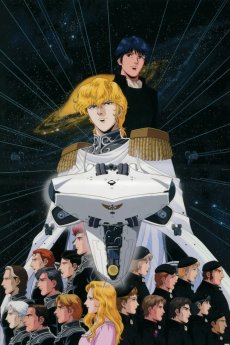 OVA DramaGinga Eiyuu Densetsu
OVA DramaGinga Eiyuu Densetsu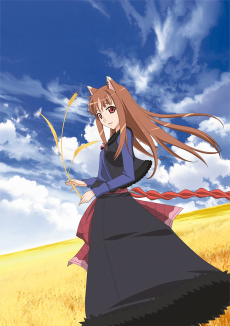 ANIME AdventureOokami to Koushinryou
ANIME AdventureOokami to Koushinryou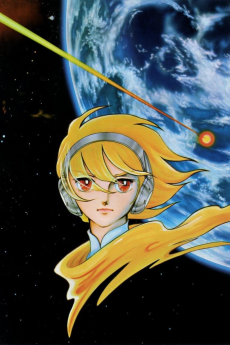 MOVIE ActionTerra e...
MOVIE ActionTerra e...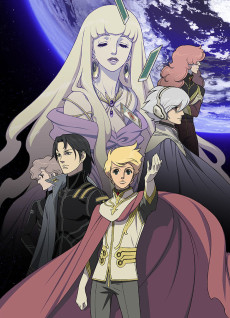 ANIME ActionTerra e... (TV)
ANIME ActionTerra e... (TV)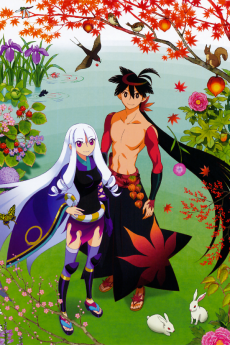 ANIME ActionKatanagatari
ANIME ActionKatanagatari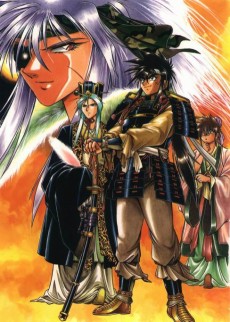 ANIME AdventureGinga Sengoku Gunyuuden Rai
ANIME AdventureGinga Sengoku Gunyuuden Rai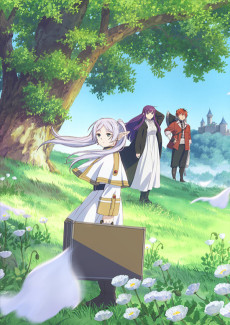 ANIME AdventureSousou no Frieren
ANIME AdventureSousou no Frieren ANIME DramaStarship Operators
ANIME DramaStarship Operators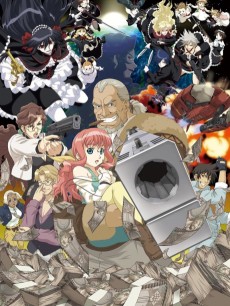 ANIME ActionCoyote Ragtime Show
ANIME ActionCoyote Ragtime Show
SCORE
- (3.6/5)
MORE INFO
Ended inMarch 27, 1999
Main Studio Sunrise
Favorited by 139 Users


